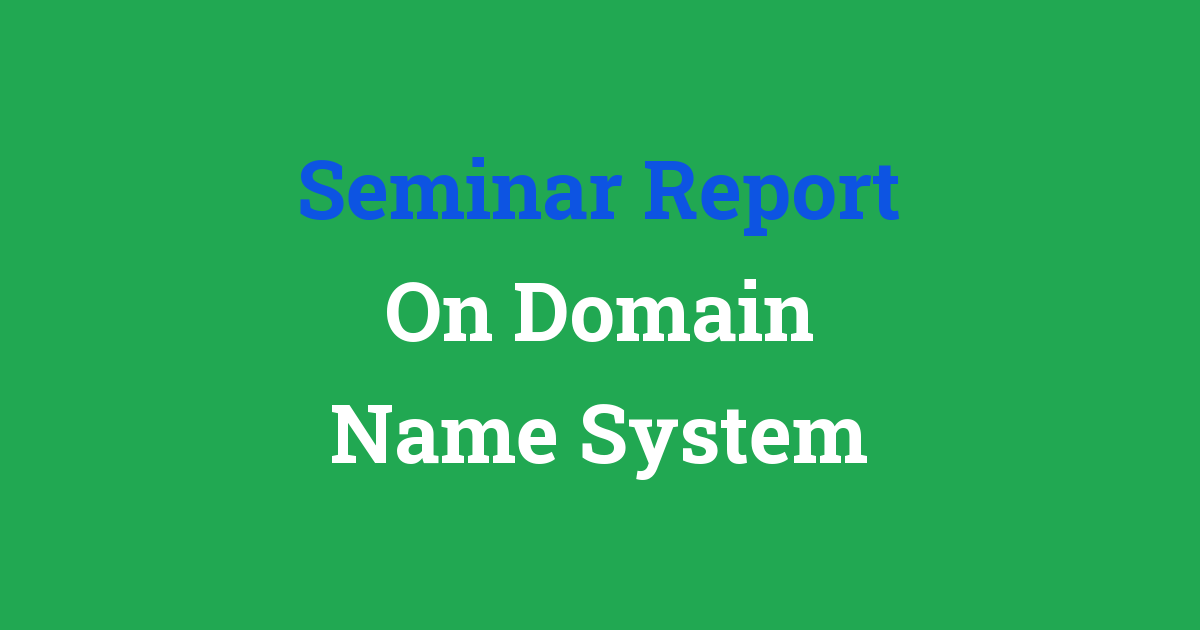Report on the seminar about the domain name system.
Introduction
Domain Name System (DNS) is a crucial component of the internet that translates domain names into IP addresses allowing users to access websites easily. In this seminar report, we will discuss the importance of DNS, the existing system, its disadvantages, and the proposed system to improve its efficiency.
Problem Statement
The traditional DNS system faces several challenges such as lack of security measures, slow response time, and vulnerability to cyber attacks. These issues impact the overall performance of the internet and hinder users’ experience. Therefore, there is a need for a more advanced and secure DNS system to address these concerns.
Existing System
The current DNS system operates on a hierarchical structure with multiple levels of DNS servers that collectively manage domain name resolution. When a user enters a domain name in their browser, the request is forwarded through these servers until the corresponding IP address is found and returned to the user. While this system has been effective so far, it is not without its drawbacks.
Disadvantages
One of the main disadvantages of the existing DNS system is its susceptibility to DNS cache poisoning attacks, where a malicious party can redirect users to fake websites by manipulating the DNS cache data. This poses a serious security threat to internet users and compromises their sensitive information.
In addition, the current DNS system lacks sufficient encryption measures, making it easier for hackers to intercept and manipulate DNS requests. This puts users at risk of privacy breaches and data theft, highlighting the need for enhanced security protocols in the DNS infrastructure.
Proposed System
To address these issues, we propose the implementation of a secure and efficient DNS system that incorporates advanced encryption algorithms, real-time threat detection, and decentralized architecture. This new system will prioritize user privacy and data security, ensuring that DNS requests are encrypted and authenticated to prevent unauthorized access.
Advantages
The proposed DNS system will offer several advantages over the existing system, including:
- Enhanced Security: By utilizing advanced encryption techniques and real-time threat detection mechanisms, the new system will protect users from DNS cache poisoning attacks and other cyber threats.
- Improved Performance: The decentralized architecture of the proposed system will reduce latency and improve response times, enhancing the overall user experience.
- Increased Reliability: By distributing DNS resolution across multiple nodes, the new system will increase reliability and prevent single points of failure.
- User Privacy: The new system will prioritize user privacy by ensuring that DNS requests are encrypted and anonymized, safeguarding sensitive information from prying eyes.
Features of the Proposed System
The proposed DNS system will include the following key features:
- End-to-End Encryption: All DNS requests and responses will be encrypted to prevent unauthorized access and manipulation.
- Real-time Threat Detection: Advanced threat detection mechanisms will monitor DNS traffic for suspicious activities and block malicious requests.
- Decentralized Architecture: The new system will distribute DNS resolution across multiple nodes to improve scalability and reliability.
- User Authentication: Users will be required to authenticate themselves before accessing DNS services, reducing the risk of unauthorized access.
Conclusion
In conclusion, the Domain Name System plays a critical role in internet communication, enabling users to access websites quickly and efficiently. However, the existing DNS system lacks sufficient security measures and is vulnerable to cyber attacks, compromising user privacy and data security. By implementing a new DNS system with enhanced security features, improved performance, and decentralized architecture, we can address these issues and ensure a safer and more reliable internet experience for all users.

